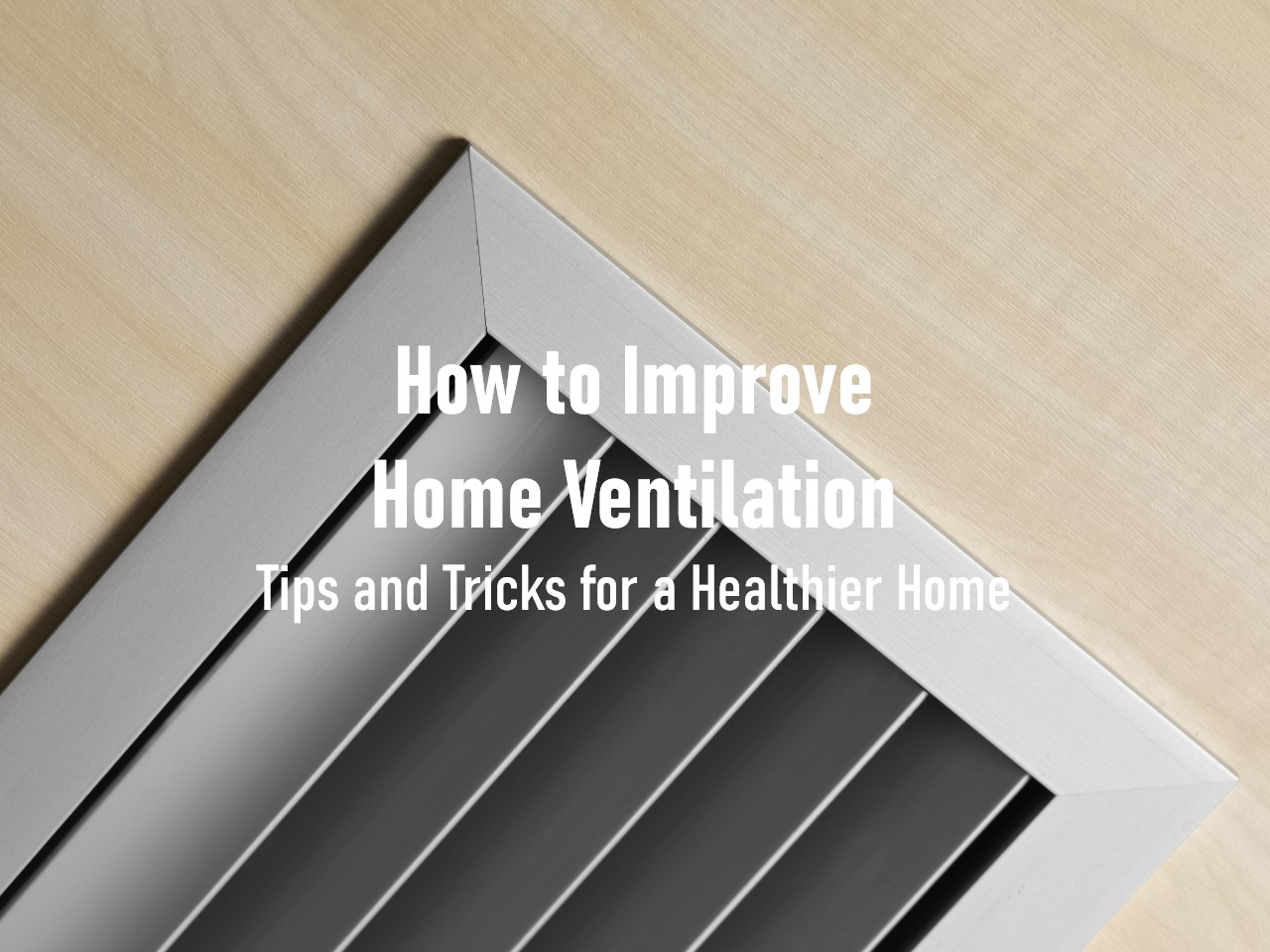To ensure good indoor air quality, proper ventilation is essential. Poor ventilation can lead to a buildup of pollutants, such as dust, mold, and chemicals, which can cause health problems, particularly for people with allergies or respiratory issues. Good home ventilation can also help to regulate temperature and humidity levels, making your home more comfortable to live in.
There are several ways to improve home ventilation. One simple method is to open windows and doors to allow fresh air to circulate. However, this may not be practical in all situations, particularly if you live in an area with high levels of pollution or if you have allergies. In these cases, mechanical ventilation systems, such as fans or HVAC systems, may be more effective. Another option is to install air filters, which can help to remove pollutants from the air. It’s important to choose the right type of filter for your needs, as some are more effective than others at removing specific pollutants.
Page Contents
- 1 Understanding Ventilation
- 2 Types of Ventilation
- 3 Importance of Proper Ventilation
- 4 Ventilation and Indoor Air Quality
- 5 Ventilation in Different Areas of the Home
- 6 Maintaining Ventilation Systems
- 7 Improving Home Ventilation
- 8 Ventilation and Health Concerns
- 9 Ventilation and Energy Efficiency
- 10 Frequently Asked Questions
Understanding Ventilation
Ventilation is the process of exchanging indoor air with outdoor air to improve indoor air quality. Good ventilation helps to remove pollutants and improve the flow of fresh air into the home. Poor ventilation can lead to stale air, which can cause health problems such as headaches, dizziness, and fatigue.
There are several ways to improve ventilation in a home. One way is to open windows and doors to allow fresh outdoor air to come in. This can be especially effective on days when the weather is mild and the air quality is good. However, this may not be practical during extreme weather conditions, such as during a heatwave or a cold snap.
Another way to improve ventilation is to use a mechanical ventilation system. These systems work by removing stale air from inside the home and replacing it with fresh outdoor air. There are several types of mechanical ventilation systems, including exhaust-only systems, supply-only systems, and balanced systems.
Exhaust-only systems work by removing stale air from inside the home, usually through a fan in the bathroom or kitchen. This creates negative pressure inside the home, which draws in fresh outdoor air through leaks in the building envelope.
Supply-only systems work by bringing in fresh outdoor air into the home, usually through a fan in the attic or crawlspace. This creates positive pressure inside the home, which forces stale air out through leaks in the building envelope.
Balanced systems work by both removing stale air and bringing in fresh outdoor air. These systems use two fans, one to exhaust stale air and one to bring in fresh outdoor air. This helps to maintain a balance between the two airflows and can be more effective at improving indoor air quality.
Improving ventilation can help to reduce the concentration of pollutants in the home and improve indoor air quality. It can also help to prevent the spread of airborne diseases, such as COVID-19. By increasing the flow of fresh air into the home, ventilation can help to dilute and remove virus particles from the air.
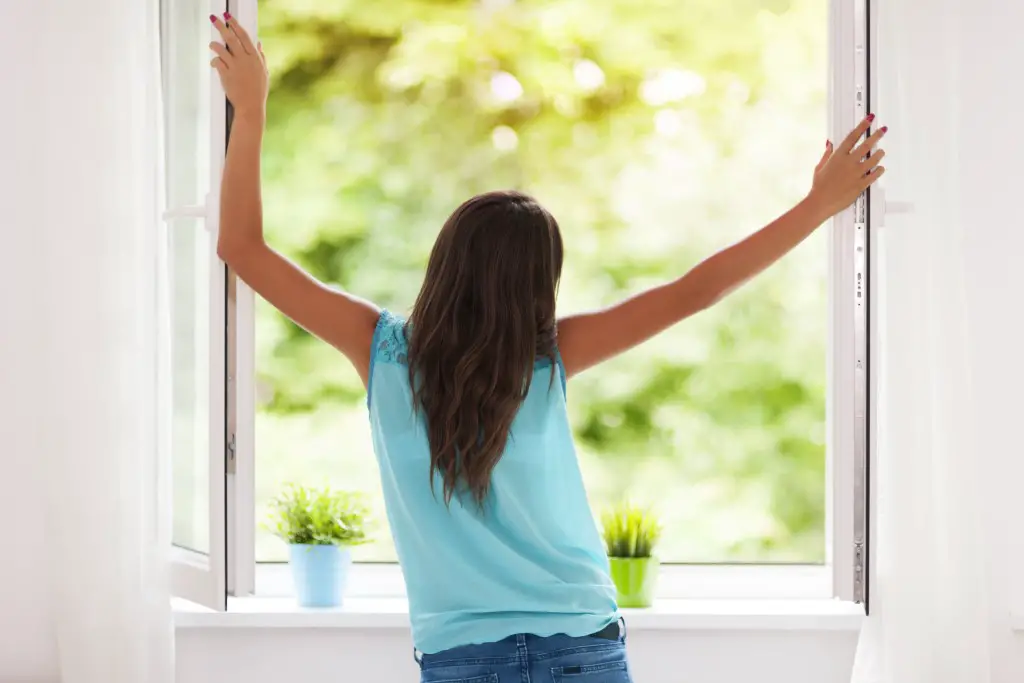
Types of Ventilation
There are various types of home ventilation systems that can be used to improve indoor air quality. The three main types of ventilation are natural, mechanical, and balanced ventilation systems.
Natural Ventilation
Natural ventilation is the process of using natural air movement to ventilate a home. This can be achieved by opening windows and doors, or by using vents or other openings in the home. This type of ventilation is the most common method used in older homes. It is also the most cost-effective and energy-efficient way to ventilate a home.
Mechanical Ventilation
Mechanical ventilation is a system that uses mechanical means to ventilate a home. This can be achieved by using fans or other mechanical devices to circulate air throughout the home. There are two types of mechanical ventilation: exhaust-only and supply-only. Exhaust-only ventilation is a system that uses exhaust fans to remove stale air from the home. Supply-only ventilation is a system that uses fans to bring fresh air into the home.
Balanced Ventilation System
A balanced ventilation system is a system that uses both exhaust and supply fans to ventilate a home. This type of system is the most effective way to ventilate a home, as it provides balanced air exchange. A balanced ventilation system can be either a whole-house ventilation system or an energy recovery ventilation system.
A whole-house ventilation system is a system that provides ventilation to the entire home. This can be achieved by using a central fan or a series of fans to circulate air throughout the home. An energy recovery ventilation system is a system that uses a heat exchanger to transfer heat and moisture from the outgoing air to the incoming air. This type of system is the most energy-efficient way to ventilate a home.
In conclusion, choosing the right type of ventilation system for your home is important for maintaining good indoor air quality. Natural ventilation is the most cost-effective and energy-efficient way to ventilate a home, while mechanical ventilation and balanced ventilation systems provide more advanced ventilation options for those who need it.
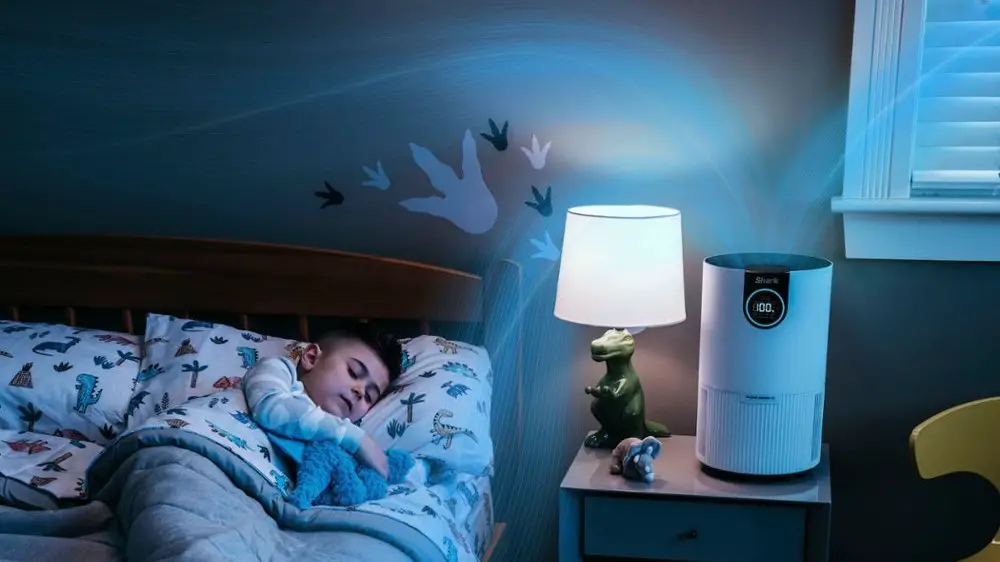
Importance of Proper Ventilation
Proper ventilation in a home is crucial for maintaining healthy indoor air quality. Without adequate ventilation, indoor air pollutants can accumulate, leading to various health problems. These pollutants can include allergens, mold, bacteria, viruses, and other airborne contaminants.
Indoor air pollution is a significant health concern, especially for those who spend most of their time indoors, such as young children, the elderly, and individuals with respiratory diseases like asthma. Exposure to indoor air pollution can cause respiratory problems, including coughing, sneezing, and shortness of breath. Long-term exposure to indoor air pollutants can even lead to lung cancer and other serious health issues.
Proper ventilation can help reduce the concentration of indoor air pollutants, making the air safer to breathe. By increasing the amount of fresh outdoor air that enters the home, ventilation can help dilute and remove pollutants from the indoor air.
In addition to health benefits, proper ventilation can also reduce the risk of mold growth and prevent the buildup of harmful chemicals like formaldehyde. Formaldehyde is a common indoor air pollutant found in many household products, including furniture, flooring, and cleaning supplies. It can cause eye, nose, and throat irritation, and long-term exposure can increase the risk of cancer.
Proper ventilation is especially important during the COVID-19 pandemic. The virus spreads through respiratory droplets and can remain airborne for extended periods. By increasing ventilation and air flow, the concentration of virus particles in the air can be reduced, lowering the risk of transmission.
Overall, proper ventilation is crucial for maintaining a healthy indoor environment. By reducing the concentration of indoor air pollutants, ventilation can help improve respiratory health and reduce the risk of serious health problems.
Ventilation and Indoor Air Quality
Indoor air quality is an important aspect of home health and comfort. Poor indoor air quality can cause health problems such as allergies, asthma, and respiratory infections. One way to improve indoor air quality is through proper ventilation. Ventilation is the process of exchanging indoor air with outdoor air to improve air quality and reduce the concentration of pollutants.
There are several ways to improve ventilation in a home. One way is to open windows and doors to let fresh air in. Another way is to use exhaust fans in the kitchen and bathroom to remove moisture and pollutants. It is also important to maintain air filters in the heating and cooling system to prevent the circulation of pollutants.
In addition to ventilation, air cleaners can also improve indoor air quality. Air cleaners, also known as air purifiers, are devices that remove pollutants from the air. There are several types of air cleaners, including portable air cleaners and whole-house air cleaners. Portable air cleaners are designed to clean the air in a single room, while whole-house air cleaners are installed in the heating and cooling system to clean the air throughout the entire home.
Air filters are an important component of air cleaners. HEPA filters, or high-efficiency particulate air filters, are the most effective type of air filter for removing pollutants from the air. HEPA filters can remove particles as small as 0.3 microns, including dust, pollen, and pet dander.
Dehumidifiers can also improve indoor air quality by reducing the humidity level in the home. High humidity can lead to the growth of mold and mildew, which can cause respiratory problems. Air fresheners should be used sparingly, as they can release volatile organic compounds (VOCs) into the air, which can cause health problems.
Overall, improving ventilation and indoor air quality can help to create a healthier and more comfortable home environment.
Ventilation in Different Areas of the Home
Proper ventilation is essential for maintaining good indoor air quality and preventing the buildup of harmful pollutants. Different areas of the home require different types of ventilation to ensure optimal air quality.
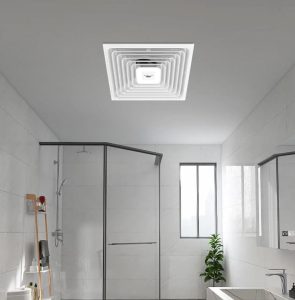
Bathroom Ventilation
Bathrooms are another area of the home where proper ventilation is essential. Bathrooms are prone to high humidity levels, which can lead to the growth of mold and mildew. These substances can cause respiratory problems and other health issues, particularly for those with allergies or asthma.
Installing an exhaust fan in the bathroom can help to remove excess moisture and prevent the growth of mold and mildew. These fans should be vented to the outside of the home to ensure that moisture is not simply recirculated throughout the house. Additionally, opening windows or using a window air conditioner can help to improve air flow and reduce humidity levels.
Kitchen Ventilation
The kitchen is one of the most important areas of the home to have good ventilation. Cooking releases a variety of pollutants, including carbon monoxide, nitrogen dioxide, and particulate matter. These pollutants can lead to respiratory problems and other health issues if not properly ventilated.
One effective way to improve kitchen ventilation is to install an exhaust fan above the stove. This fan should be vented to the outside of the home to ensure that pollutants are not simply recirculated throughout the house. Additionally, opening windows or using a window air conditioner can help to improve air flow and reduce the buildup of pollutants.
Attic Ventilation
Proper attic ventilation is important for maintaining good indoor air quality and preventing the buildup of harmful pollutants. Attics are prone to high humidity levels, which can lead to the growth of mold and mildew. Additionally, attics can become hot and stuffy, which can lead to the buildup of pollutants.
One effective way to improve attic ventilation is to install an attic fan. These fans can help to remove excess moisture and prevent the growth of mold and mildew. Additionally, opening windows or using a window air conditioner can help to improve air flow and reduce the buildup of pollutants.
Overall, proper ventilation is essential for maintaining good indoor air quality and preventing the buildup of harmful pollutants. By installing exhaust fans, opening windows, and using other ventilation methods, homeowners can ensure that their homes are healthy and safe.
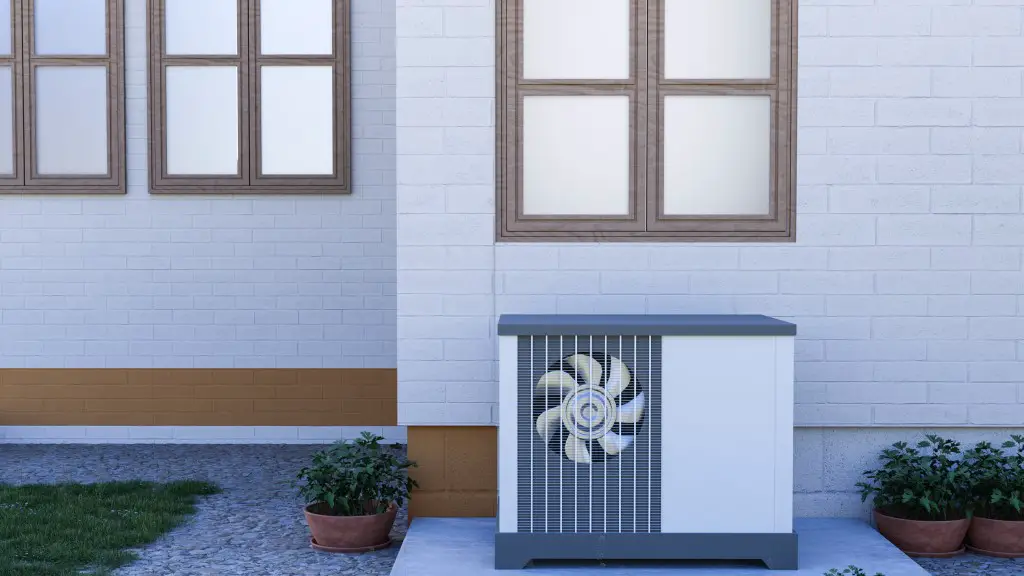
Maintaining Ventilation Systems
Proper maintenance of HVAC systems is essential for ensuring optimal indoor air quality. Regular maintenance can also help prevent costly repairs and extend the life of the system. Here are some tips for maintaining ventilation systems:
- Replace filters regularly: Dirty filters can obstruct airflow and reduce the efficiency of the system. Filters should be replaced every 1-3 months, depending on the type of filter and the level of usage.
- Clean coils and ductwork: Over time, coils and ductwork can accumulate dirt, dust, and other debris, which can reduce the efficiency of the system and compromise indoor air quality. Regular cleaning can help prevent these issues.
- Check for leaks and blockages: Leaks and blockages in the ductwork can also reduce the efficiency of the system and compromise indoor air quality. Regular inspections can help identify these issues and prevent costly repairs.
- Use control systems: HVAC systems can be equipped with control systems that can help optimize performance and reduce energy consumption. These systems can also help maintain optimal indoor air quality.
- Use cleaning products carefully: When cleaning HVAC systems, it’s important to use cleaning products that are safe and effective. Harsh chemicals can damage the system and compromise indoor air quality.
By following these tips, homeowners can ensure that their HVAC systems are operating at peak efficiency and providing optimal indoor air quality. Regular maintenance can also help prevent costly repairs and extend the life of the system.
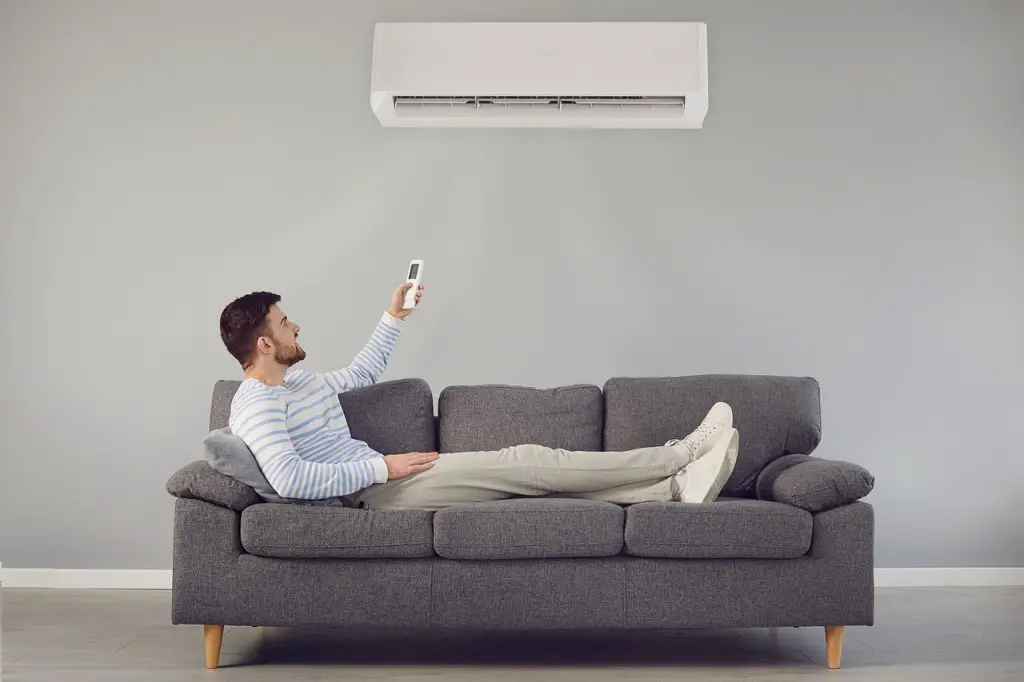
Improving Home Ventilation
Proper ventilation is essential to maintain good indoor air quality and reduce the risk of respiratory illnesses. Here are some ways to improve home ventilation:
Open Windows and Doors
Opening windows and doors is one of the easiest and most effective ways to improve natural ventilation. This method introduces fresh outdoor air into the home, which helps to reduce indoor air pollutants and improve air quality. It is recommended to open windows and doors for at least 15 minutes a day, especially during the morning and evening hours when the outdoor air quality is better.
Use Fans
Fans can help to improve air circulation and reduce indoor air pollutants. Ceiling fans, in particular, are an excellent way to improve ventilation as they can help to distribute air evenly throughout the room. Portable fans can also be used to improve ventilation in specific areas of the home.
Insulate Your Home
Proper insulation can help to prevent air leaks and improve energy efficiency. Insulation helps to keep the home cool in the summer and warm in the winter, which reduces the need for heating and cooling systems. This, in turn, helps to improve ventilation as the air inside the home is not stagnant.
Use Energy-Efficient Heating and Cooling Systems
Energy-efficient heating and cooling systems are designed to improve ventilation and reduce energy consumption. These systems use advanced filtration technology to remove indoor air pollutants and circulate fresh outdoor air into the home. They also help to maintain a consistent temperature and humidity level, which is essential for good indoor air quality.
Improve Airflow
Improving airflow is another way to improve ventilation. This can be done by keeping the doors between rooms open, using air deflectors on vents, and keeping furniture away from vents. It is also important to keep the air conditioning and heating systems well-maintained to ensure that they are working efficiently.
Use Supply Ventilation
Supply ventilation systems are designed to bring fresh outdoor air into the home. These systems work by using fans to draw outdoor air into the home and distribute it evenly throughout the house. They can be particularly useful in homes that are tightly sealed, as they can help to improve ventilation and reduce indoor air pollutants.
Improving home ventilation is essential to maintain good indoor air quality and reduce the risk of respiratory illnesses. By following these tips, homeowners can create a healthier and more comfortable living environment.
Ventilation and Health Concerns
Proper ventilation is crucial to maintaining a healthy indoor environment. Poor ventilation can lead to an accumulation of pollutants, which can cause a variety of health problems. According to the Centers for Disease Control and Prevention (CDC), improving ventilation can help reduce the spread of viruses like COVID-19 by filtering the air and improving air flow.
Indoor air pollutants can come from a variety of sources, including dust, allergens, pet dander, gases, radon, asbestos, mold, fumes, and more. Some of these pollutants can cause health problems such as respiratory issues, allergies, headaches, and fatigue.
Humidity levels and dampness can also affect indoor air quality. High humidity levels can lead to mold growth and the release of harmful toxins. Dampness can also cause structural damage and attract pests.
In addition to health concerns, poor ventilation can also lead to discomfort. Stale air, high temperatures, and frost can all affect the overall comfort of a home.
To ensure proper ventilation, it is important to regularly clean and maintain HVAC systems, use exhaust fans in bathrooms and kitchens, and open windows and doors to allow fresh air to circulate. It is also important to monitor humidity levels and address any dampness or water damage promptly.
By taking steps to improve ventilation, homeowners can help maintain a healthy and comfortable indoor environment for themselves and their families.
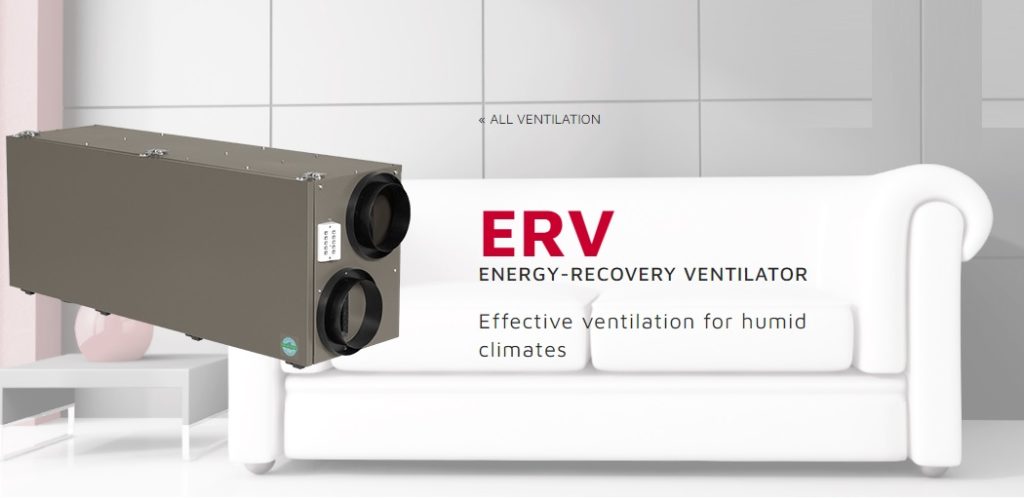
Ventilation and Energy Efficiency
Proper ventilation is essential for maintaining a healthy indoor environment. However, it is also important to ensure that the ventilation system is energy-efficient. A well-designed ventilation system can help to reduce energy consumption, improve indoor air quality, and lower utility bills.
One way to improve energy efficiency is by ensuring that the home is well-insulated. A well-insulated home will require less heating and cooling, which means that less energy is needed to maintain a comfortable temperature. This can help to reduce the load on the ventilation system and improve its overall efficiency.
Another way to improve energy efficiency is by using an energy recovery ventilator (ERV). An ERV is a type of ventilation system that recovers the energy from the exhaust air and uses it to preheat or precool the incoming fresh air. This can help to reduce the amount of energy needed to heat or cool the home, which can lead to significant energy savings.
Depressurization is another important factor to consider when designing an energy-efficient ventilation system. Depressurization occurs when the ventilation system removes more air from the home than it brings in. This can lead to a range of problems, including backdrafting of combustion appliances, increased emissions, and reduced indoor air quality. To prevent depressurization, it is important to ensure that the ventilation system is properly balanced and that there is adequate makeup air.
Dryers and combustion appliances can also have a significant impact on indoor air quality and energy efficiency. It is important to ensure that these appliances are properly vented to the outside to prevent the buildup of pollutants and moisture in the home. Additionally, painting and other activities that release volatile organic compounds (VOCs) should be done with adequate ventilation to prevent indoor air pollution.
In summary, proper ventilation is essential for maintaining a healthy indoor environment. However, it is also important to ensure that the ventilation system is energy-efficient. By using insulation, energy recovery ventilators, and properly vented dryers and combustion appliances, it is possible to create an energy-efficient ventilation system that improves indoor air quality and reduces utility bills.
Frequently Asked Questions
What are some signs that indicate poor ventilation in a house?
Some signs that indicate poor ventilation in a house include musty or stale odors, excessive humidity, mold growth, and condensation on windows. Poor ventilation can also cause health problems such as headaches, dizziness, and respiratory issues.
What is the best home ventilation system for improving air quality?
The best home ventilation system for improving air quality depends on the specific needs of the household. Some options include exhaust fans, window fans, and whole-house ventilation systems. It is important to choose a system that is appropriate for the size of the house and the number of occupants.
How can I improve ventilation in a room without windows?
Improving ventilation in a room without windows can be challenging, but there are some options. One option is to install an exhaust fan that vents to the outside. Another option is to use a portable air purifier that filters the air and circulates it around the room. Opening doors to other rooms or using a dehumidifier can also help improve air circulation.
